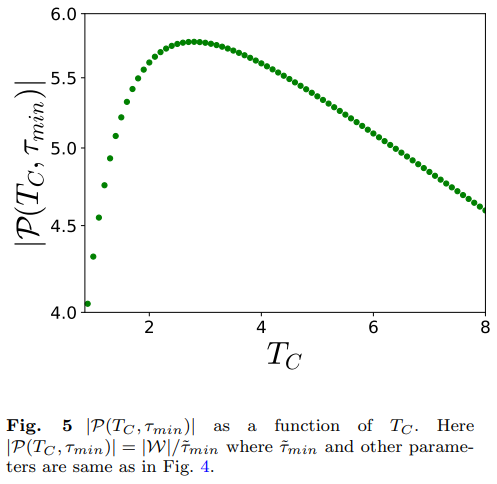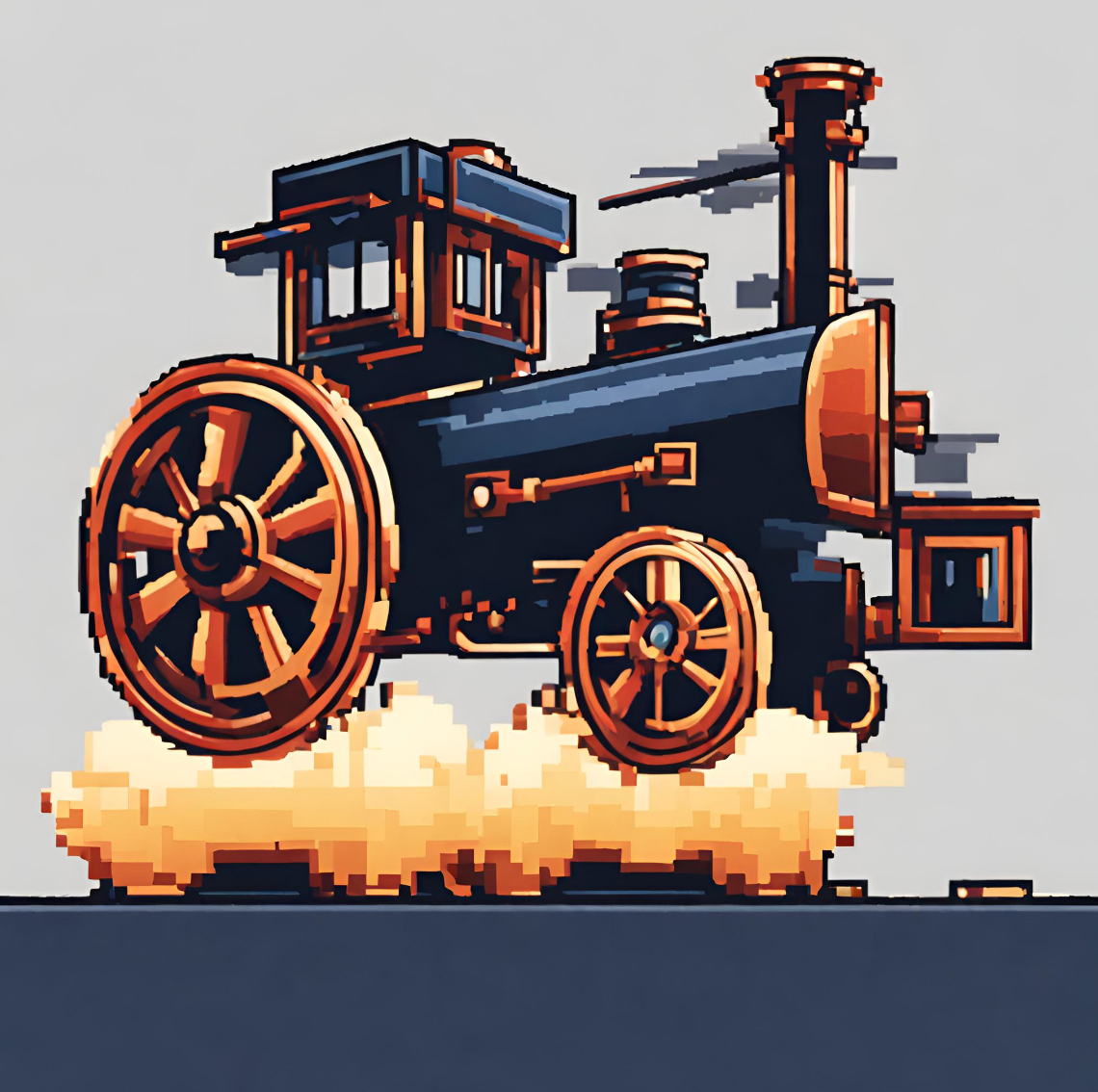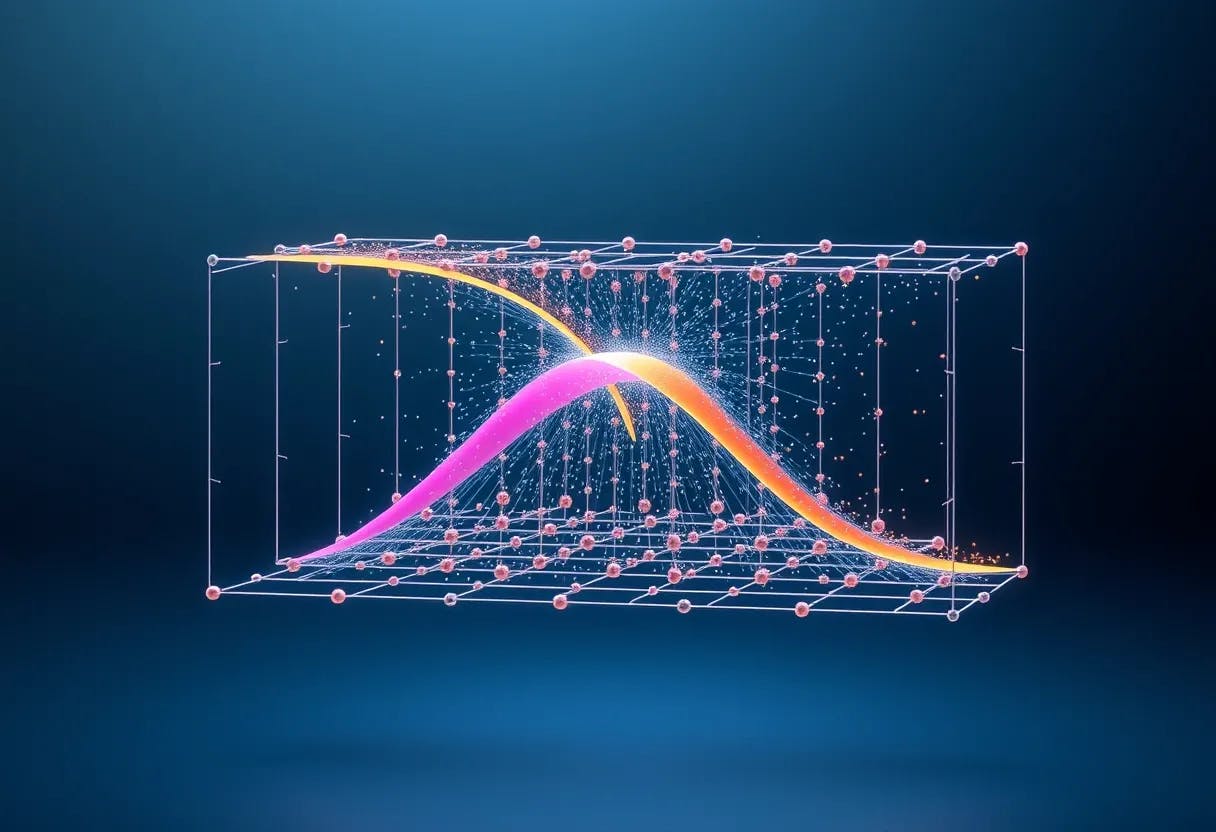Authors:
(1) Revathy B S, Raman Research Institute, Bengaluru, 560080, Karnataka, India and Corresponding author;
(2) Victor Mukherjee, Department of Physical Sciences, Indian Institute of Science Education and Research Berhampur, Berhampur, 760010, Odisha, India;
(3) Uma Divakaran, Department of Physics, Indian Institute of Technology Palakkad, Palakkad, 678623, Kerala, India.
Table of Links
3 Many body quantum Otto cycle
4 Universal scalings in work output
5 Transverse Ising model as working medium
6 Conclusion
We construct a many body quantum Otto cycle with a WM that undergoes a quantum phase transition. The non-unitary strokes of the cycle are powered by finite temperature baths, while the unitary strokes involve driving the WM close

to the critical point. This driving leads to nonadiabatic excitations which can be quantified using relative excess energy that follows universal scalings with the rate of driving as well as the temperature of the cold bath. The excess energy can be linked to the output work of the engine which thus manifests the universal scalings shown by the excess energy. Notably, we show that higher values of the cold bath temperature TC allows one to operate the engine close to the adiabatic limit for lower values of τ2 ≈ τmin, which further follows universal scaling relations. This raises interesting questions regarding the importance of control methods such as shortcuts to adiabaticity [41], or bath engineering [23], for finite temperature quantum heat engines. Furthermore, our results for one-dimensional transverse Ising model WM suggest the existence of an optimal value of the cold bath temperature TC > 0, for operating the QHE with high work output at high power. These counterintuitive results stem from the dominance of thermal fluctuations over quantum fluctuations in finite-temperature quantum critical heat engines, for higher bath temperatures.
Acknowledgements. R.B.S. and U.D. acknowledge the use of HPC facility Chandra at IIT Palakkad. U.D. acknowledges support from SERB (SPG/2022/000708). V.M. acknowledges support from SERB through MATRICS (Project No. MTR/2021/000055) and a Seed Grant from IISER Berhampur.
Data Availability Statement. Any data that support the findings of this study are included within the article.
References
[1] Jochen Gemmer, Mathias Michel, and G¨unter Mahler. Quantum thermodynamics: Emergence of thermodynamic behavior within composite quantum systems, volume 784. Springer, 2009.
[2] Robert Alicki and Ronnie Kosloff. Introduction to Quantum Thermodynamics: History and Prospects. Springer International Publishing, 2018.
[3] Sai Vinjanampathy and Janet Anders. Quantum thermodynamics. Contemporary Physics, 57:545, 2016.
[4] Johannes Roßnagel, Samuel T. Dawkins, Karl N. Tolazzi, Obinna Abah, Eric Lutz, Ferdinand Schmidt-Kaler, and Kilian Singer. A single-atom heat engine. Science, 352(6283):325–329, 2016.
[5] D. von Lindenfels, O. Grab, C. T. Schmiegelow, V. Kaushal, J. Schulz, Mark T. Mitchison, John Goold, F. Schmidt-Kaler, and U. G. Poschinger. Spin heat engine coupled to a harmonic-oscillator flywheel. Phys. Rev. Lett., 123:080602, Aug 2019.
[6] John P. S. Peterson, Tiago B. Batalh˜ao, Marcela Herrera, Alexandre M. Souza, Roberto S. Sarthour, Ivan S. Oliveira, and Roberto M. Serra. Experimental characterization of a spin quantum heat engine. Phys. Rev. Lett., 123:240601, Dec 2019.
[7] James Klatzow, Jonas N. Becker, Patrick M. Ledingham, Christian Weinzetl, Krzysztof T. Kaczmarek, Dylan J. Saunders, Joshua Nunn, Ian A. Walmsley, Raam Uzdin, and Eilon Poem. Experimental demonstration of quantum effects in the operation of microscopic heat engines. Phys. Rev. Lett., 122:110601, Mar 2019.
[8] Obinna Abah and Eric Lutz. Optimal performance of a quantum otto refrigerator. Europhysics Letters, 113(6):60002, apr 2016.
[9] Andreas Hartmann, Victor Mukherjee, Glen Bigan Mbeng, Wolfgang Niedenzu, and Wolfgang Lechner. Multi-spin counterdiabatic driving in many-body quantum otto refrigerators. Quantum, 4:377, 2020.
[10] Thao P. Le, Jesper Levinsen, Kavan Modi, Meera M. Parish, and Felix A. Pollock. Spinchain model of a many-body quantum battery. Phys. Rev. A, 97:022106, Feb 2018.
[11] Francesco Campaioli, Felix A. Pollock, and Sai Vinjanampathy. Quantum batteries - review chapter. arXiv: Quantum Physics, 2018.
[12] Victor Montenegro, Marco G. Genoni, Abolfazl Bayat, and Matteo G. A. Paris. Quantum metrology with boundary time crystals. Communications Physics, 6(1):304, Oct 2023.
[13] Karl Joulain, Jeremie Drevillon, Younes Ezzahri, and Jose Ordonez-Miranda. Quantum thermal transistor. Phys. Rev. Lett., 116:200601, May 2016.
[14] Nikhil Gupt, Srijan Bhattacharyya, Bikash Das, Subhadeep Datta, Victor Mukherjee, and Arnab Ghosh. Floquet quantum thermal transistor. Phys. Rev. E, 106:024110, Aug 2022.
[15] H. T. Quan, Yu-xi Liu, C. P. Sun, and Franco Nori. Quantum thermodynamic cycles and quantum heat engines. Phys. Rev. E, 76:031105, Sep 2007.
[16] Ronnie Kosloff and Yair Rezek. The quantum harmonic otto cycle. Entropy, 19(4), 2017.
[17] M. Campisi and R. Fazio. The power of a critical heat engine. Nat. Commun., 7:11895, 2016.
[18] Thomas Fogarty and Thomas Busch. A many-body heat engine at criticality. Quantum Science and Technology, 6(1):015003, nov 2020.
[19] Giulia Piccitto, Michele Campisi, and Davide Rossini. The ising critical quantum otto engine. New Journal of Physics, 2022.
[20] Yu-Han Ma, Shan-He Su, and Chang-Pu Sun. Quantum thermodynamic cycle with quantum phase transition. Phys. Rev. E, 96:022143, Aug 2017.
[21] Watanabe G. Yu YC Guan XW Chen, YY. and del Campo. An interaction-driven many particles quantum heat engine and its universal behavior. npj Quantum Inf, 5, 2019.
[22] Revathy B.S, Victor Mukherjee, Uma Divakaran, and Adolfo del Campo. Universal finite-time thermodynamics of many-body quantum machines from kibble-zurek scaling. Phys. Rev. Res., 2:043247, 2020.
[23] Revathy B.S, Victor Mukherjee, and Uma Divakaran. Bath engineering enhanced quantum critical engines. Entropy, 24(10), 2022.
[24] Revathy B.S, Harsh Sharma, and Uma Divakaran. Improving performance of quantum heat engines by free evolution. arXiv preprint arXiv:2302.07003, 2023.
[25] Jacek Dziarmaga. Dynamics of a quantum phase transition: Exact solution of the quantum ising model. Phys. Rev. Lett., 95:245701, Dec 2005.
[26] Victor Mukherjee, Uma Divakaran, Amit Dutta, and Diptiman Sen. Quenching dynamics of a quantum xy spin- 1 2 chain in a transverse field. Phys. Rev. B, 76:174303, Nov 2007.
[27] K. Sengupta, Diptiman Sen, and Shreyoshi Mondal. Exact results for quench dynamics and defect production in a two-dimensional model. Phys. Rev. Lett., 100:077204, Feb 2008.
[28] Maximilian Keck, Simone Montangero, Giuseppe E Santoro, Rosario Fazio, and Davide Rossini. Dissipation in adiabatic quantum computers: lessons from an exactly solvable model. New Journal of Physics, 19(11):113029, nov 2017.
[29] Souvik Bandyopadhyay, Sudarshana Laha, Utso Bhattacharya, and Amit Dutta. Exploring the possibilities of dynamical quantum phase transitions in the presence of a markovian bath. Scientific Reports, 8(1):11921, 2018.
[30] Bogdan Damski and Wojciech H. Zurek. Adiabatic-impulse approximation for avoided level crossings: From phase-transition dynamics to landau-zener evolutions and back again. Phys. Rev. A, 73:063405, Jun 2006.
[31] Anatoli Polkovnikov, Krishnendu Sengupta, Alessandro Silva, and Mukund Vengalattore. Colloquium: Nonequilibrium dynamics of closed interacting quantum systems. Rev. Mod. Phys., 83:863–883, Aug 2011.
[32] Adolfo Del Campo and Wojciech H Zurek. Universality of phase transition dynamics: Topological defects from symmetry breaking. International Journal of Modern Physics A, 29(08):1430018, 2014.
[33] Amit Dutta, Gabriel Aeppli, Bikas K Chakrabarti, Uma Divakaran, Thomas F Rosenbaum, and Diptiman Sen. Quantum phase transitions in transverse field spin models: from statistical physics to quantum information. Cambridge University Press, 2015.
[34] A. Polkovnikov and V. Gritsev. Breakdown of the adiabatic limit in low-dimensional gapless systems. Nature Physics, 4:477, June 2008.
[35] C. De Grandi, V. Gritsev, and A. Polkovnikov. Quench dynamics near a quantum critical point: Application to the sine-gordon model. Phys. Rev. B, 81:224301, Jun 2010.
[36] C. De Grandi, V. Gritsev, and A. Polkovnikov. Quench dynamics near a quantum critical point. Phys. Rev. B, 81:012303, Jan 2010.
[37] Shusa Deng, Gerardo Ortiz, and Lorenza Viola. Dynamical critical scaling and effective thermalization in quantum quenches: Role of the initial state. Phys. Rev. B, 83:094304, 2011.
[38] Pierre Pfeuty. The one-dimensional ising model with a transverse field. Annals of Physics, 57(1):79 – 90, 1970.
[39] J. E. Bunder and Ross H. McKenzie. Effect of disorder on quantum phase transitions in anisotropic xy spin chains in a transverse field. Phys. Rev. B, 60:344–358, Jul 1999.
[40] Elliott Lieb, Theodore Schultz, and Daniel Mattis. Two soluble models of an antiferromagnetic chain. Annals of Physics, 16(3):407 – 466, 1961.
[41] Andreas Hartmann, Victor Mukherjee, Wolfgang Niedenzu, and Wolfgang Lechner. Many-body quantum heat engines with shortcuts to adiabaticity. Phys. Rev. Res., 2:023145, May 2020.
This paper is available on arxiv under CC BY 4.0 DEED license.

